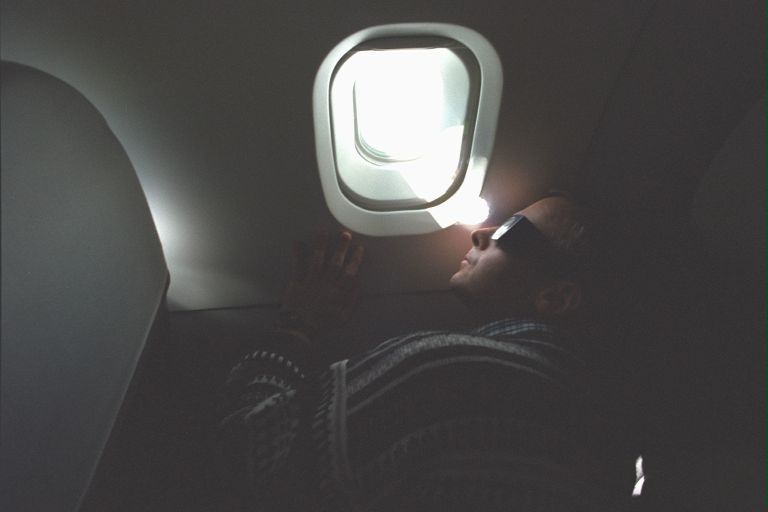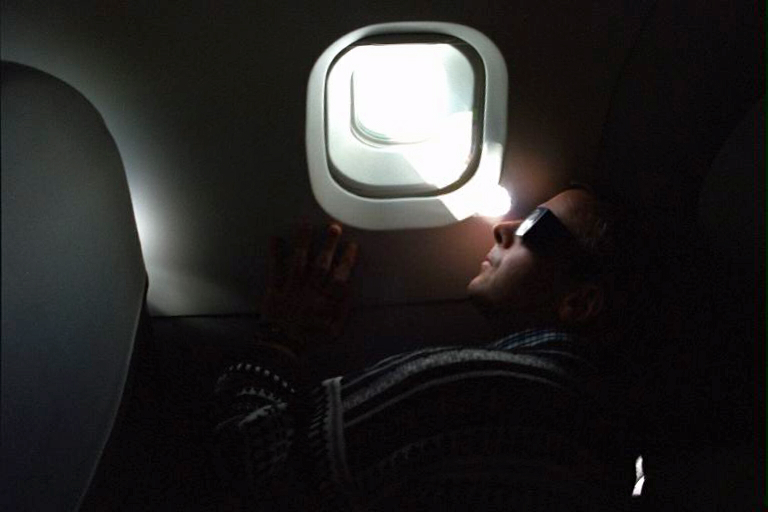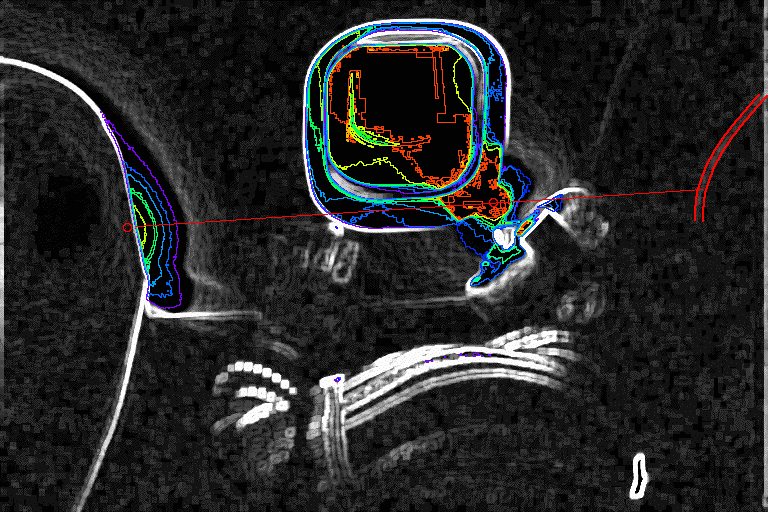
ORIGINAL IMAGE

First, I did an approximate correction for the geometric distortion in the original image (top on above page) which was almost certainly introduced by a wide-angle lens in the camera. To estimate the distortion matrix I assumed that the window frame was intrinsically rectangular, but still in a parallactic projection as it was not "viewed" orthogonal to the window as seen from the camera. There was also an intrinsically linear reference as there is the bottom of a cosmetic wall panel which runs tilted a bit from horizontal (through the hand to the chin). With the geometrical distortion largely corrected, I then did a simple histogram re-equalization and contrast/brightness re-stretch on the image as shown below.
GEOMETRICALLY CORRECTED AND ENHANCED IMAGE

With this, the edge of the seat "behind" du Foresto is easily visible. (At least it is in the original TIFF file, it looses quite a bit in this .jpg rendition).
I then converted the image to gray and did a gradient edge enhancement on that image. Then I generated flux isophotes from the original geometrically corrected images around the bright regions of the visible window to define a photocentric reference, and from the light from the window obscured by the seat in front and overlayed these on the edge-enhanced image . By fitting the isophotal half-ellipses of the obscured window, I am reasoning that the extrapolated photocenter there would be where the "hot spot" in the lower right of the unseen window would be. This looked like it worked reasonably well as the line joining the two "hot spots" (red circles) is very close to parallel to the tilted "horizontal" reference. This image, with the discussed overlay is shown below. Note the seat back edge behind du Foresto is outlined with red arcs.

The seat pitch in the Concord, is 37". Knowing this I measured the distance from the back edge of the seat to the left, and the visible front edge of the seat on the right (where the seat edges cross a line joining and extending through the window "hot spots". Now a BIG assumption. I do not know how "thick" the seat backs are. I am making the "ballpark" assumption that they are similar to first class seats on an MD 80, or about 6 inches. This by far is the biggest error in this, but to accept it for now this makes the length of the red line in the bottom image on the above page 31" in length. With this as a reference, the spacing between the hot spot photocenters, and hence presumably the windows, then is approximately 20.0". As a check on this scaling, the width of the interior (closest to observer) window pain (not the frame) 8.7". This can be checked once you locate you notes on the window size.
IF these numbers are correct then the cadence of the seats and windows is as shown below.

If this is correct, then the photo of du Foresto's row
with only one window (arbitrarily shown at the left in this section of
eight rows) is the exception rather than the rule. This sort of beating
pattern of seats and windows has obvious implications for view-sharing
and needs to be considered in planning.